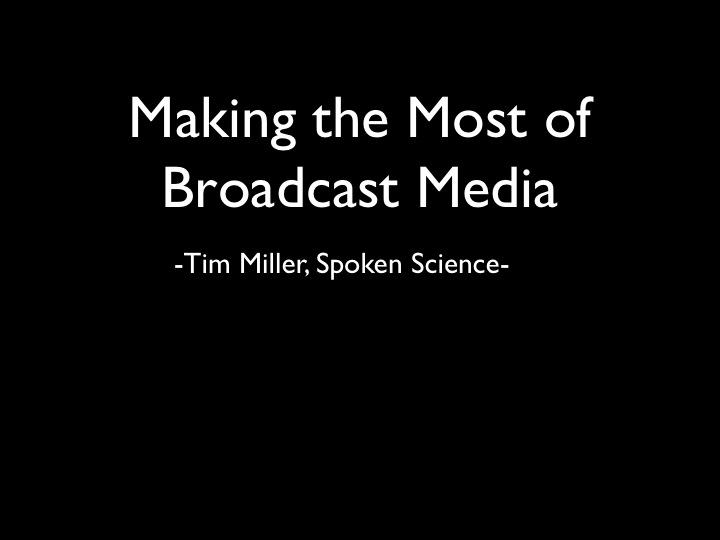DESCRIPTION
This a workshop designed to help working scientists get their work noticed in the media.
DESCRIPTION
This a workshop designed to help working scientists get their work noticed in the media.
OBJECTIVES
BIG IDEA
There a few simple principles that can make any piece of research news more attractive to people in the media, and a few simple steps that a researcher can take to maximize his or impact in the media.
LEARNING GOALS
The media landscape has dramatically changed over the last ten years, and these changes present both new challenges and new opportunities.
Since everyone has access to huge amounts of information, public engagement is more about generating enthusiasm than delivering information.
In order to be newsworthy, research must emphasize something that is new.
When releasing research information to news organizations, it is important to distill the information into a few simple key points.
When preparing research work for the media, it is more important to make the work interesting that make sure you are exhaustive in delivering information.
When participating in a media interview, it is important to be well-prepared, to look your best, and to try as best you can to remain confident and relaxed.
NANO CONTENT MAP
Scientists and engineers have formed the interdisciplinary field of nanotechnology by investigating properties and manipulating matter at the nanoscale.
Credits
Museum of Science, Boston, MA
Developed for the NISE Network with funding from the National Science Foundation under Award Numbers 0532536 and 0940143. Any opinions, findings, and conclusions or recommendations expressed in this product are those of the authors and do not necessarily reflect the views of the Foundation.
Creative Commons Attribution Non-Commercial Share Alike 3.0 United States (CC BY-NC-SA 3.0 US).
View more details

NISE Network products are developed through an iterative collaborative process that includes scientific review, peer review, and visitor evaluation in accordance with an inclusive audiences approach. Products are designed to be easily edited and adapted for different audiences under a Creative Commons Attribution Non-Commercial Share Alike license. To learn more, visit our Development Process page.

